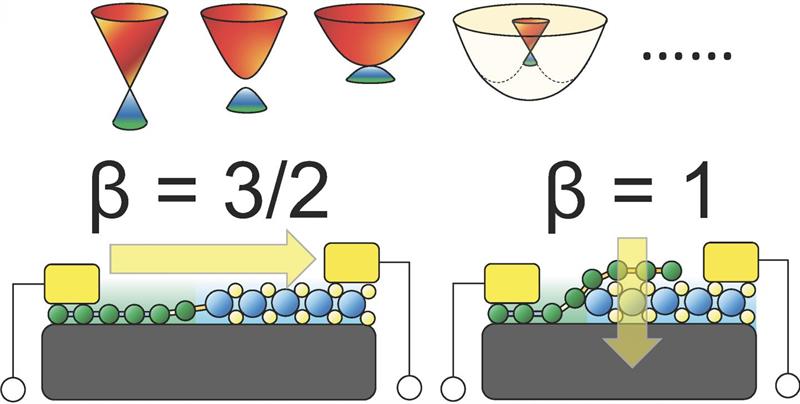Several theoretical models have co-existed in the literatures and a model is often selected a priori without rigorous justifications. It is not uncommon to see a model, whose underlying physics fundamentally contradicts with the physical properties of 2D materials, being deployed to analyse a 2D material Schottky diode.
Now, researchers from the Singapore University of Technology and Design (SUTD) have made steps towards resolving the mysteries surrounding it. By employing a rigorous theoretical analysis, the researchers developed a theory to describe different variants of 2D-material-based Schottky diodes under a unifying framework.
This theory lays down a foundation that the researchers say helps to unite prior contrasting models, thus resolving a major confusion in 2D material electronics.
"A particularly remarkable finding is that the electrical current flowing across a 2D material Schottky diode follows a one-size-fits-all universal scaling law for many types of 2D materials," said first-author Dr. Yee Sin Ang from SUTD.

| Schematic drawing of a 2D-material-based lateral (left) and vertical (right) Schottky diode. For broad classes of 2D materials, the current-temperature relation can be universally described by a scaling exponent of 3/2 and 1, respectively, for lateral and vertical Schottky diodes. Credit: Singapore University of Technology and Design |
This “law” dictates how electrical current varies with temperature and is applicable to broad classes of 2D systems, including semiconductor quantum well, graphene, silicene, germanene, stanene, transition metal dichalcogenides and the thin-films of topological solids, according to the researchers.
"The simple mathematical form of the scaling law is particularly useful for applied scientists and engineers in developing novel 2D material electronics," said co-author Professor Hui Ying Yang from SUTD.
The scaling laws provide a simple tool for the extraction of Schottky barrier height - a physical quantity critically important for performance optimisation of 2D material electronics, the researchers say.
"The new theory has far reaching impact in solid state physics," said co-author and principal investigator of this research, Professor Lay Kee Ang from SUTD, "It signals the breakdown of classic diode equation widely used for traditional materials over the past 60 years, and shall improve our understanding on how to design better 2D material electronics."













